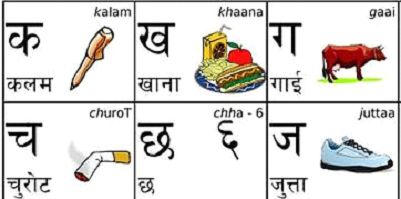By Sarah-Claire Jordan
 Before we can delve into what it is to translate English into Nepali, we should take a look at what the Nepali language is like. Nepali is part of the Indo-Aryan language family, and acts as both the official language and the lingua franca of the country of Nepal. However, it is also spoken in some parts of India as well as Burma and Bhutan. It has official status in one Indian state and one Indian district, Sikkim and the Darjeeling district of West Bengal.
Before we can delve into what it is to translate English into Nepali, we should take a look at what the Nepali language is like. Nepali is part of the Indo-Aryan language family, and acts as both the official language and the lingua franca of the country of Nepal. However, it is also spoken in some parts of India as well as Burma and Bhutan. It has official status in one Indian state and one Indian district, Sikkim and the Darjeeling district of West Bengal.
Nepali has all kinds of influences from several different languages, due to its development in an area close to other countries and cultures. The languages it most resembles are the Magahi and the Pahari languages, but it shows a lot of Sanskrit influence as well. Given that it is so close to China and Burma, the Tibeto-Burman languages have left their mark on Nepali as well. Lexically, Nepali and Bengali are 40% similar, though 80% of the sounds in Nepali are also similar to those of Hindi.
It was originally called “Khas”, probably after the people who originally spoke it. Then it was called Gorkhali/Gurkhali, meaning “language of the kingdom of Gorkha”. There were a few other names for it as well, before Nepal became known as Nepal and the language of the majority of the people there was named Nepali. Anyone who deals with Nepali translation worth their salt will know this along with a more complete history of the language and its origins.
Delving into translation, it should be noted that Nepali is generally written using the Devanagari script, also known as Nagari. This same script is also used by over 120 other languages, among them Hindi, Marathi, Bodo, and more. The script is made up of 47 different characters and is read left-to-right, which makes it easier, in a way, for English to be translated into a language using this script such as Nepali. The fact that the script used is a syllabary and that the spelling of words shows the variation in pronunciation could prove to be a challenge for some, but a good translator won’t have any issues with this.
Nepali grammar shares many characteristics with other Indo-Aryan languages, but there are a few things that make it unique. For starters, verbs are very inflected and have to agree with the number, gender, and status of the person or subject. Mood, aspect, and tense will also change the inflection of a verb in Nepali. The most common and important verb in Nepali, the one that means “to be” and “to become”, is also the most complicated to conjugate. All in all, there are about 48 different conjugations for each Nepali verb.
Though Nepali is only spoken by a portion of the world’s population and is mostly relegated to Nepal and the neighboring areas previously mentioned, it is still an important language to consider when thinking about expanding your company’s reach and get more international business. Getting in touch with a professional translation team experienced in Nepali translation will help you reach Nepali speakers and begin a business relationship that could last for a very long time.




